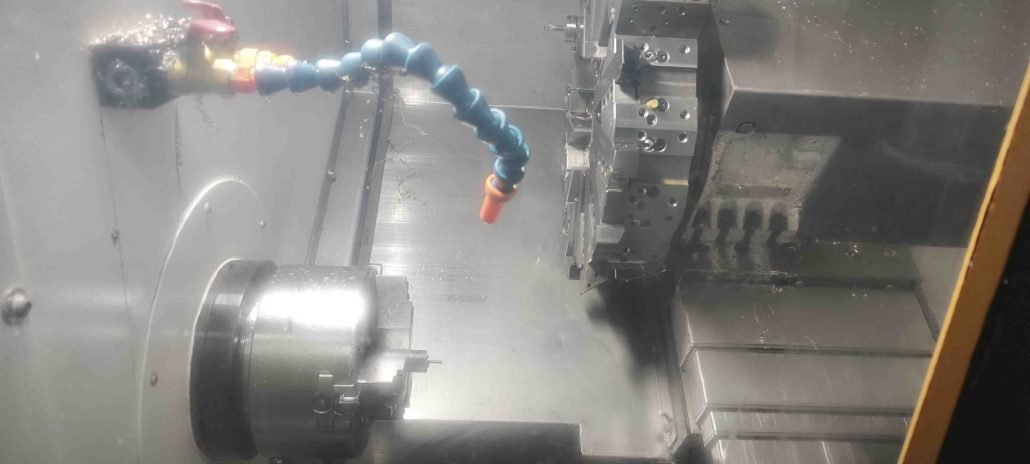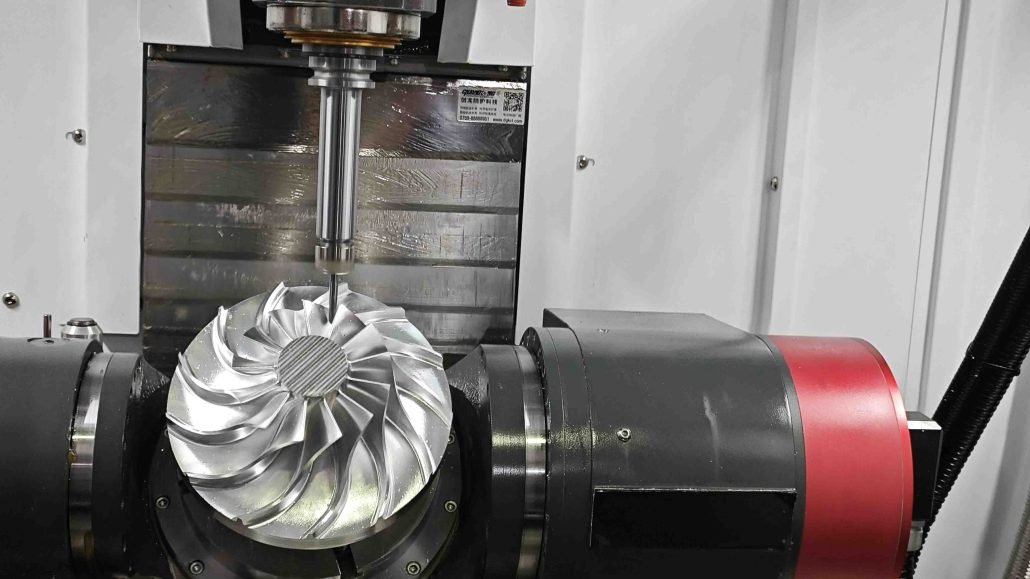This article provides a simple explanation of CNC, or Computer Numerical Control, a manufacturing process that has revolutionized the industry. From the basics of how CNC machines work to their wide range of applications, this article covers everything you need to know about CNC.
CNC, or Computer Numerical Control, is a manufacturing process that has revolutionized the industry. By using computer software to control and operate machines, CNC has made it possible to produce a wide range of products with incredible accuracy and precision. From simple parts to complex machinery, CNC machine parts can make almost anything.
CNC Definition
CNC stands for Computer Numerical Control. It is a manufacturing process that uses pre-programmed computer software to control the movement of machines and tools. The machines are typically lathes, mills, routers, and grinders, and they are used to cut, shape, and form raw materials into finished products. CNC machines are highly accurate and precise, and they offer a number of advantages over traditional manufacturing methods. These include increased efficiency, reduced labor costs, and the ability to create complex shapes and designs with ease. CNC technology is used in a wide range of industries, including aerospace, automotive, electronics, and medical devices.

The Basics of CNC
CNC machines work by taking instructions from computer software and converting them into a series of commands that control the movements of the machine. These commands are sent to the machine through a code that is written in a specific programming language. The code tells the machine how to move its various components, such as the cutting tools, the spindle, and the workpiece, in order to create the desired product.
CNC machines are incredibly versatile and can be programmed to produce a wide variety of products. They are used in a variety of industries, including aerospace, automotive, medical, and electronics, to produce everything from airplane parts to medical implants to circuit boards.
CNC Processes
CNC processes are widely used in manufacturing industries to produce high precision parts and components. These processes are automated and use computer software to control the machines. Some of the commonly used CNC processes are as follows:
- Turning: In this process, a cutting tool is used to remove material from a rotating workpiece to give it a desired shape. This process is used to produce cylindrical or conical shapes.
- Milling: Milling is a process of cutting and shaping materials using a rotating cutter. This process is used to produce complex shapes and designs.
- Drilling: Drilling is a process of creating holes in a workpiece using a rotating drill bit. This process is used to create holes of different sizes and shapes.
- Grinding: Grinding is a process of removing material from a workpiece using an abrasive wheel. This process is used to produce smooth and accurate surfaces.
CNC processes offer several advantages over traditional manufacturing processes. These processes are highly accurate, repeatable, and can be programmed to produce complex shapes and designs. CNC machines are also capable of working with a variety of materials, including metals, plastics, and composites.
In conclusion, CNC processes have revolutionized the manufacturing industry by enabling the production of high precision parts and components with greater efficiency and accuracy.

CNC Components
When it comes to CNC (Computer Numerical Control) machines, the components used can have a huge impact on the machine’s performance. Here are some of the most important components:
- Spindle: The spindle is responsible for rotating the tool that cuts the material. It is important to choose a spindle with the right amount of power and speed for the job.
- Controller: The controller is the brain of the machine. It receives input from the operator and translates it into commands for the machine’s motors and other components.
- Motors: CNC machines use motors to move the spindle and other components. There are several types of motors, including stepper motors and servo motors. Each type has its own advantages and disadvantages.
- Linear Guides: Linear guides are used to guide the movement of the machine’s components along a specific path. They help ensure precision and accuracy.
- Ball Screws: Ball screws are used to transfer the rotational motion of the motors into linear motion. They are important for ensuring accuracy and reducing wear on the machine.
- Tooling: Tooling refers to the cutting tools used by the machine. It is important to choose the right tool for the job to ensure the best possible results. By paying attention to these components and choosing high-quality parts, CNC machines can be made to perform at their best.
CNC Applications
CNC machines have a wide range of applications in various industries. In the aerospace industry, they are used to make parts for aircraft engines, wings, and other components. In the automotive industry, CNC machines are used to produce engine parts, transmissions, and other components. In the medical industry, CNC machines are used to create medical implants, prosthetics, and other medical devices. In the electronics industry, CNC machines are used to make circuit boards, computer components, and other electronic parts.

One of the major advantages of CNC is its ability to produce parts with very tight tolerances or very precise measurements. This makes it ideal for producing parts that require a high degree of accuracy, such as those used in the aerospace and medical industries. CNC machines can produce parts with incredible accuracy, often within a few thousandths of an inch.
CNC machines can also produce parts quickly and efficiently, which can help manufacturers reduce their production times and costs. Additionally, CNC machines can be programmed to produce multiple parts at once, which can further reduce production times and costs. This makes CNC an incredibly cost-effective way to produce high-quality products.
Another advantage of CNC is its ability to produce parts with complex shapes and designs. CNC machines can be programmed to create intricate designs and shapes that would be difficult or impossible to produce with traditional manufacturing techniques. This makes CNC an ideal choice for industries that require highly specialized parts or products.
Future of CNC
As technology continues to advance, so too will CNC. With the development of new software and hardware, CNC machines will become even more powerful and versatile. In the future, we can expect to see CNC machines capable of producing even more complex parts and products, and doing so with even greater accuracy and efficiency.
The future of CNC may also involve the development of new materials that can be used in the manufacturing process. For example, new composite materials may be developed that are stronger and lighter than traditional materials, which could be used to create parts for the aerospace and automotive industries.
Conclusion
In conclusion, CNC is a powerful tool that has had a significant impact on the manufacturing industry. By using computer software to control and operate machines, CNC has made it possible to produce a wide range of products with incredible accuracy and precision. From simple parts to complex machinery, CNC machines can make almost anything. As technology continues to advance, we can expect to see even more powerful and versatile CNC machines in the future, as well as the development of new materials and applications.
FAQ
CNC stands for Computer Numerical Control, which is a manufacturing technology that uses computer software to control and operate machines, enabling precise control over the manufacturing process.
CNC machines can be used to manufacture a wide range of products, from simple parts to complex mechanical equipment. They are widely used in various industries, including aerospace, automotive, medical, and electronics.
CNC machines can produce parts with very high precision, making them widely used in fields that require high accuracy, such as aerospace and medical industries. Additionally, CNC machines can produce parts quickly and efficiently, which can help manufacturers reduce production time and costs.
As technology continues to advance, CNC technology is expected to become even more powerful and versatile. We can expect to see more powerful and multifunctional CNC machines in the future, as well as the development and application of new materials, which will bring more opportunities and challenges to the manufacturing industry.


